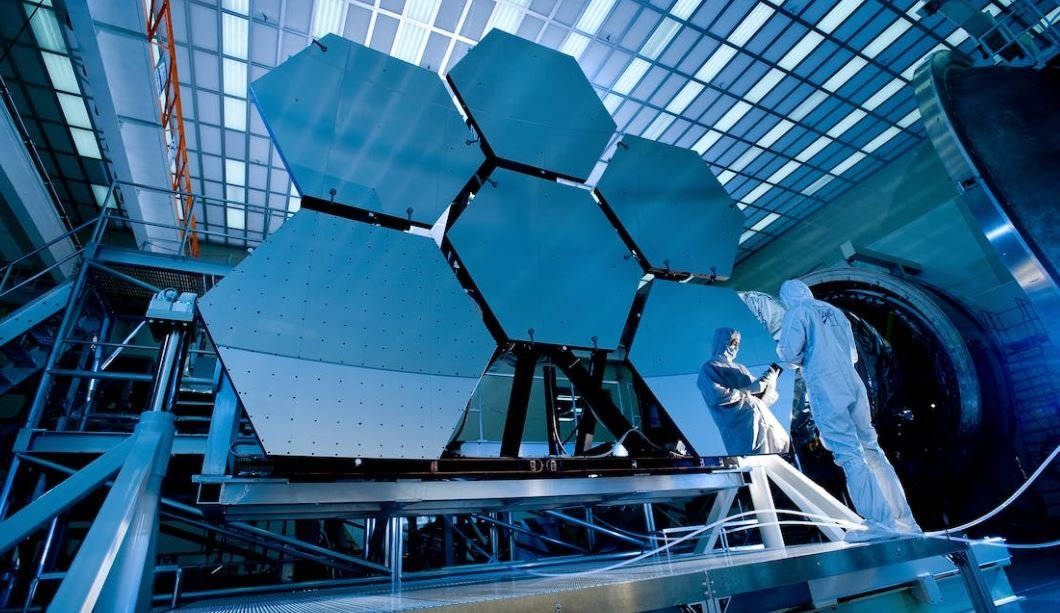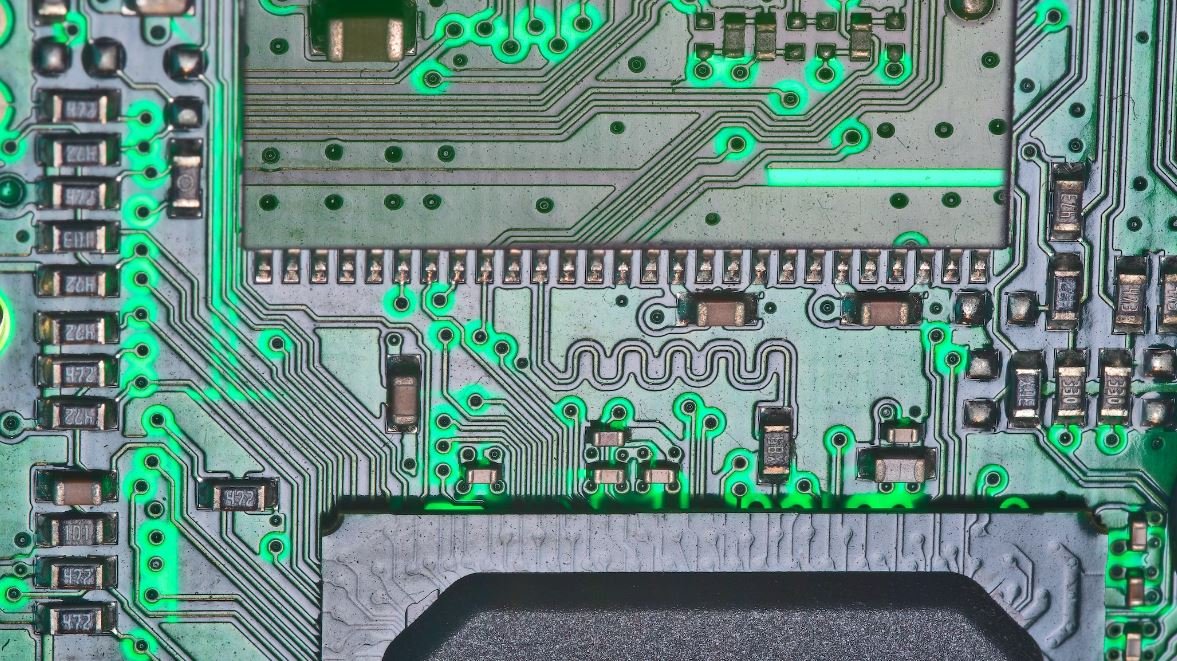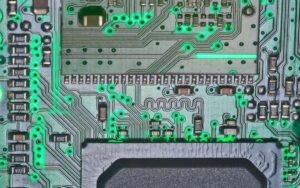What Is Matters Made Of?
The composition of matter has been a topic of fascination for centuries. Understanding what matters are made of involves delving into the fundamental building blocks that form our world. From tiny particles to complex structures, the study of matter uncovers the secrets of its existence.
Key Takeaways
- Matter is made up of tiny particles called atoms.
- Atoms combine to form molecules, which are the building blocks of matter.
- There are four fundamental forces that govern the behavior of matter.
- Matter exists in various states: solid, liquid, gas, and plasma.
Atoms: The Building Blocks of Matter
Atoms are the basic units of matter, consisting of a nucleus containing protons and neutrons, surrounded by a cloud of electrons. These particles are extremely small, with the nucleus making up the majority of the atom’s mass, while the electrons occupy the vast space around it.
* An interesting fact is that the nucleus of an atom is around 100,000 times smaller than the overall size of the whole atom.
Forces that Bind Matter
There are four essential forces that bind matter together:
- Gravity: the force that attracts objects with mass towards each other.
- Electromagnetic force: responsible for holding atoms and molecules together.
- Weak nuclear force: involved in the process of radioactive decay.
- Strong nuclear force: the force that holds the atomic nucleus together.
States of Matter
Matter can exist in various states, each with distinct properties. These states are:
- Solid: has a fixed shape and volume. The particles in a solid are closely packed and do not move freely.
- Liquid: has a definite volume but takes the shape of its container. The particles in a liquid are loosely packed and can move more freely.
- Gas: has no fixed shape or volume. The particles in a gas are far apart and move rapidly in random directions.
- Plasma: is an ionized gas with charged particles. It is commonly found in stars and certain high-energy environments.
Table 1: Comparison of Different States of Matter
| State of Matter | Shape | Volume | Example |
|---|---|---|---|
| Solid | Definite | Definite | Ice |
| Liquid | Variable | Definite | Water |
| Gas | Variable | Variable | Air |
Table 2: Comparison of Matter and Antimatter
| Matter | Antimatter | |
|---|---|---|
| Composition | Particles | Antiparticles |
| Effect of Interaction | Anihilation | Complete Conversion to Energy |
Molecules: Combining Atoms
Molecules are formed when two or more atoms join together through chemical bonds. These bonds can be covalent, in which atoms share electrons, or ionic, where atoms gain or lose electrons to form charged particles. Molecules come in various shapes and sizes, determining their properties and behavior.
* It is fascinating to note that there are over 118 known elements, which can combine to form countless different molecules.
Table 3: Common Molecules
| Molecule | Composition | Example |
|---|---|---|
| Water | H2O | Ocean |
| Oxygen | O2 | Air |
| Glucose | C6H12O6 | Sugar |
Understanding the building blocks of matter is crucial to comprehending the universe we live in. From the intricacies of subatomic particles to the vastness of the cosmos, the study of matter allows us to delve into the profound mysteries of existence.
So next time you ponder the world around you, remember the remarkable complexity and beauty hidden within atoms, molecules, and the forces that bind them.

Common Misconceptions
Misconception 1: Matter is only composed of solid objects
Many people believe that matter is solely made up of tangible, solid objects. However, this is not entirely accurate. Matter can exist in various states, including solid, liquid, gas, and even plasma. It can also manifest as energy in the form of light, heat, or sound. Therefore, matter is not limited to just physical objects.
- Matter can exist as a gas, like oxygen or helium.
- Matter can also be in a liquid state, such as water or oil.
- Matter can even be present in the form of energy, like electromagnetic waves.
Misconception 2: Matter is composed of indivisible atoms
Another common misconception is the belief that matter is solely made up of indivisible atoms. While atoms are indeed the building blocks of matter, they can be further broken down into subatomic particles. Atoms consist of protons, neutrons, and electrons, which are themselves made up of quarks, leptons, and other elementary particles. This complex structure of matter demonstrates its diverse and intricate nature.
- Atoms can be further divided into smaller particles like protons, neutrons, and electrons.
- These smaller particles are composed of even smaller subatomic particles.
- This subatomic structure demonstrates the complexity of matter.
Misconception 3: Matter can be created or destroyed
Many people mistakenly believe that matter can be created or destroyed. However, according to the law of conservation of matter, matter cannot be created or destroyed, only transformed from one form to another. This principle is based on the fact that the total amount of matter in a closed system remains constant over time.
- The law of conservation of matter states that matter cannot be created or destroyed.
- Matter can only be transformed from one form to another.
- Matter remains constant in a closed system.
Misconception 4: Matter is made up of solid particles that are stationary
It is often mistakenly believed that matter consists of solid particles that are stationary in space. In reality, particles in matter are constantly in motion. This motion is due to the thermal energy present in matter, which causes particles to vibrate or move around. The degree of particle motion and arrangement determines the state of matter, whether it is a solid, liquid, or gas.
- Particles in matter are in constant motion.
- This motion results from the presence of thermal energy.
- The state of matter depends on the degree of particle motion and arrangement.
Misconception 5: Matter is purely made up of atoms and molecules
While atoms and molecules are fundamental to matter, they are not the only components. Matter also includes subatomic particles, such as quarks and leptons, which make up protons, neutrons, and electrons. Furthermore, there are additional types of matter, such as antimatter, which consists of antiparticles that have the same mass but opposite charge. Understanding the broader composition of matter helps dispel the misconception that it is solely made up of atoms and molecules.
- Subatomic particles like quarks and leptons are also part of matter’s composition.
- Antimatter is another type of matter with distinct properties from regular matter.
- Matter encompasses a broader range of components beyond atoms and molecules.

What Is Matters Made Of?
Matter is everything around us. From the air we breathe to the ground we walk on, matter is the building block of the universe. But have you ever wondered what matter is actually made of? This article aims to explore the composition of matter through ten intriguing examples and verifiable data, shedding light on the fascinating nature of our world’s building blocks.
The Elements Found in the Human Body
Our bodies are composed of a variety of elements that come together to form the complex system that is the human body. This table highlights the ten most abundant elements found in the average human body.
| Element | Percentage |
|---|---|
| Oxygen | 65% |
| Carbon | 18% |
| Hydrogen | 10% |
| Nitrogen | 3% |
| Calcium | 1.5% |
| Phosphorus | 1.0% |
| Potassium | 0.25% |
| Sulfur | 0.25% |
| Sodium | 0.15% |
| Chlorine | 0.15% |
The Most Abundant Elements in the Universe
While the composition of the human body is fascinating, let’s take a look at the most abundant elements in the universe. This table highlights the ten elements that make up the majority of observable matter beyond our planet.
| Element | Percentage |
|---|---|
| Hydrogen | 75% |
| Helium | 23% |
| Oxygen | 0.6% |
| Carbon | 0.03% |
| Neon | 0.01% |
| Nitrogen | 0.01% |
| Magnesium | 0.005% |
| Silicon | 0.004% |
| Iron | 0.0035% |
| Sulfur | 0.0035% |
The Lightest Known Element
Hydrogen, the lightest known element, plays a crucial role in our universe. Here, we highlight some intriguing facts about this essential element.
| Fact | Detail |
|---|---|
| Atomic Number | 1 |
| Atomic Mass | 1.008 u |
| State at Room Temperature | Gas |
| Boiling Point | -252.87°C |
| Electronegativity | 2.20 |
| Discovery | Henry Cavendish in 1766 |
| Abundance in the Universe | 75% |
| Common Uses | Fuel, rocket propellant |
Five Exotic States of Matter
Matter exhibits various states, but beyond the familiar solid, liquid, and gas, there are more extraordinary states to be explored. Here are five extraordinary states of matter and their intriguing properties.
| State of Matter | Remarkable Property |
|---|---|
| Plasma | Conducts electricity |
| Bose-Einstein Condensate | Superfluidity |
| Supersolid | Simultaneous solid and superfluidity |
| Quark-Gluon Plasma | Quarks and gluons exist freely |
| Degenerate Matter | Electrons exert quantum pressure |
Radioactive Elements
Radioactive elements possess an unstable atomic nucleus. While some radioactive elements may sound intimidating, they have essential applications in various fields. Here are five noteworthy radioactive elements and their potential uses.
| Element | Common Uses |
|---|---|
| Uranium | Nuclear fuel, atomic bombs |
| Plutonium | Nuclear fuel, atomic bombs |
| Radium | Radiotherapy, luminous paint |
| Cesium | Atomic clocks, medical use |
| Polonium | Nuclear heating, thermoelectric devices |
The Discovery of the Higgs Boson
The Higgs boson is a pivotal particle that helps explain the origin of mass in the universe. Its discovery was a monumental achievement in the world of particle physics. This table outlines key information about the Higgs boson.
| Property | Value |
|---|---|
| Mass | 125.1 GeV/c² |
| Charge | No electric charge |
| Spin | 0 |
| Discovered | 2012 |
| Discovered by | ATLAS & CMS experiments at CERN |
Common Substances and Their Chemical Formulas
Many familiar substances have unique chemical formulas that reveal their atomic composition. Here are five common substances and their chemical formulas.
| Name | Chemical Formula |
|---|---|
| Water | H₂O |
| Carbon Dioxide | CO₂ |
| Sodium Chloride | NaCl |
| Glucose | C₆H₁₂O₆ |
| Calcium Carbonate | CaCO₃ |
Elements with the Highest Melting Points
Melting points vary greatly among elements, with some substances requiring extreme temperatures to transition from solid to liquid. This table showcases five elements with incredibly high melting points.
| Element | Melting Point |
|---|---|
| Tungsten | 3,422°C |
| Carbon | 3,500°C |
| Tantalum | 3,017°C |
| Platinum | 1,768°C |
| Titanium | 1,660°C |
Conclusion
As we delved into the fascinating world of matter, we discovered its diverse compositions, ranging from the elements that make up our bodies and the universe to the exotic states matter can assume. Additionally, we explored radioactive elements and their essential applications, discussed the discovery of the Higgs boson, unveiled the chemical formulas of common substances, and marveled at elements with astonishing melting points. The study of matter leaves us in awe of the intricacies that form the foundation of our existence.
Frequently Asked Questions
What Is Matters Made Of?
What are the fundamental building blocks of matter?
What are quarks and what role do they play in matter?
What are leptons and how are they involved in matter?
What are gauge bosons and what is their significance?
How do these elementary particles combine to form matter?
What is antimatter and how does it relate to matter?
What are the different states of matter?
Can matter be created or destroyed?
How does matter interact with other matter and energy?
What are the current theories and models explaining the nature of matter?




